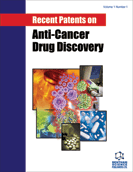
Abstract
Background: The pharmaceutical development of endocrine disruptors could not achieve appropriate advances in the field of anticancer fight.
Objective: Considerations on the principles of currently used endocrine therapies.
Methods: Comparison of the results of genetic studies being performed on breast cancer cells treated with estrogens, synthetic estrogens and antiestrogens.
Results: In breast cancer cells, increased estrogen concentrations amplify ER-signaling via a synergistic upregulation of both liganded and unliganded ER-activations and increased aromatase expression. The higher the upregulation of ER-signaling, the stronger is the tumor response. Low doses of synthetic estrogens exert an inhibition on the ligand-independent AF1-domain in breast cancer cells, while provoke compensatory activation on the superior, ligand-dependent AF2-domain of ERs and estrogen synthesis. Conversely, high doses of synthetic estrogens induce uncompensated genome-wide disruption in ER-regulated genes leading to toxic symptoms and unpredictable tumor responses. Treatment with antiestrogens, either ER-blockers or aromatase inhibitors, obstructs the crucial AF2-domain of ERs strongly deteriorating the activation of genomic machinery. Tumor responses to antiestrogen treatment depend on the compensatory activation of ER-signaling and the restoration of genomic stability. Recent patents provide methods for the conversion of ER-negative cancers to ER-positive ones improving the possibility of successful treatment.
Conclusion: In tumor cells, the stabilization of genomic machinery and self-directed death may be achieved via a balanced activation of the AF1 and AF2 domains of ERs by natural estrogen treatment. In contrast, the blockade of either AF1 or AF2 domain by endocrine disruptors leads to toxic symptoms and unforeseeable tumor responses.
Keywords: Antiestrogen, cancer treatment, estrogen receptor, ethinylestradiol, genomic stability, growth factor receptor, synthetic estrogen, tamoxifen, tumor response.



























